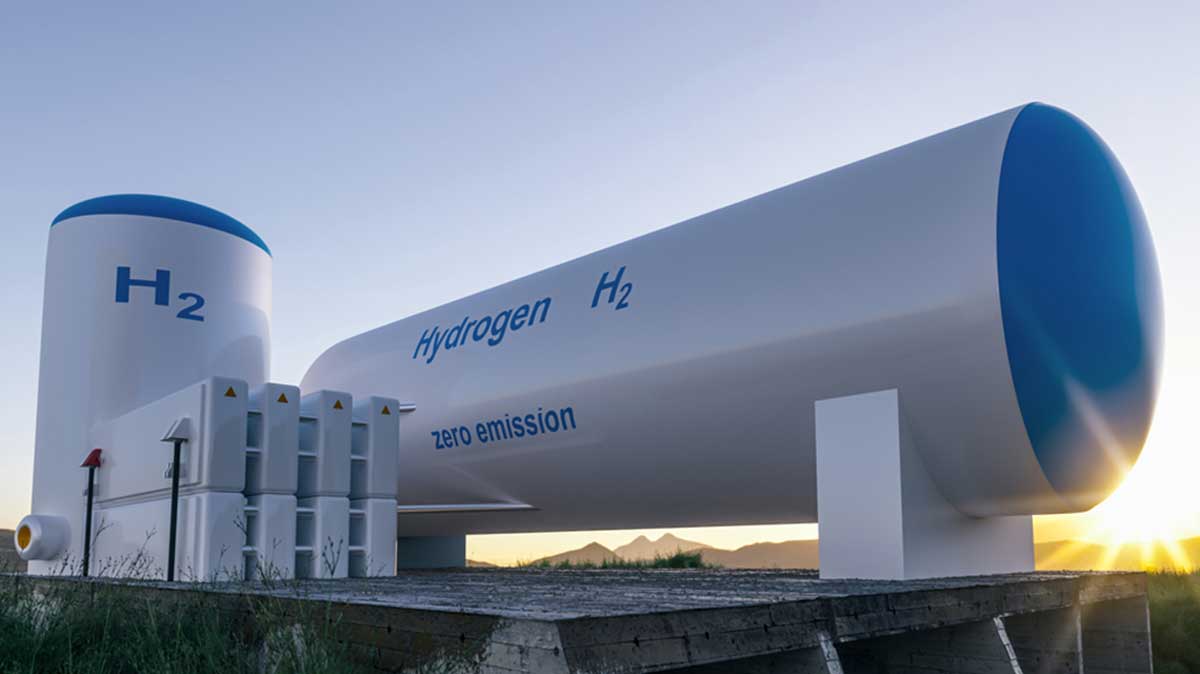Natural gas is the primary source of hydrogen, and steam methane reformers using natural gas are majorly used in hydrogen production. However, hydrogen is also produced by the adoption of newer technologies, such as electrolysis and pyrolysis. Steam methane reforming is a method of producing hydrogen and other gases, including carbon monoxide and carbon dioxide. The steam methane reforming process is a mature and advanced technology in hydrogen generation.
However, the spread of COVID-19 is an unprecedented worldwide public health crisis that has impacted nearly every business, and its long-term consequences are expected to influence industry growth throughout the projection period. COVID-19 has resulted in changes in consumer behavior and demand, purchasing patterns, supply chain rerouting, current market dynamics, and substantial government engagement. Economic insecurity caused by the pandemic had also triggered the public and private investors to reconsider the investment decisions in terms of taking up new construction-based projects.
Aftermath 0f Covid-19 and Government Initiative to Boost the Global Hydrogen Generation Market
The government had taken many steps to ensure the availability of raw materials by keeping track of the supply and demand of the intermediate goods for producing hydrogen. Alongside, the government of various countries is also providing subsidies for raw materials, supporting the domestic producers with short-term loans, to assist SMEs (small and medium enterprises) and local manufacturers engaged in the generation of hydrogen.
For instance,
- The Government of India intends to construct green infrastructure for the e-commerce sector to balance environmental efficiency with energy conservation, fuelling the demand of hydrogen generation market
STRATEGIC DECISIONS FOR MANUFACTURERS AFTER COVID-19 TO GAIN COMPETITIVE MARKET SHARE
The sector of hydrogen generation was one of the most damaged sectors by COVID-19. Several steps were taken to increase international cooperation among the countries to promote investments and improve the ease of doing business inside the nations. Also, various relief measures were provided for the middle market and large businesses in hydrogen generation. New and existing projects were given a kick start by inviting technological innovations supported by the government.
For instance,
- Rapid industrialization and urbanization in India, China, and other Asian nations, together with the adoption of smart and energy-efficient technologies used for generating hydrogen, have a favorable impact on hydrogen generation market demand
Impact on Price
The worldwide hydrogen generation market is extremely fragmented, with several small and big players competing on price and quality. The demand for hydrogen has seen a severe downfall since May 2020, due to the spread of the COVID-19 pandemic resulting in fluctuating prices of raw materials used for generating hydrogen. The rise in prices of basic materials caused by the pandemic, as well as a scarcity of stock with wholesalers, had posed a problem for many small and large-scale projects, affecting the global hydrogen generation market.
Impact On Demand
The major sector of the hydrogen generation market is the power industry, as a major part of the demand for hydrogen comes from this sector. The demand for hydrogen was likewise sluggish, as people were mainly prioritizing the health requirements over any other requirements. Furthermore, the emergence of remote-based work facilities had reduced the need for office buildings and reduced electricity usage, affecting the global hydrogen generation market.
Impact on Supply Chain
The global Coronavirus pandemic had put the contemporary global supply chain to the test like never before. The pandemic had a genuine global impact, causing many fractures in numerous supply chain areas such as component suppliers, production locations, and in the last mile to the end-users. The production process came to a pause due to the shortage of labourers in almost all the manufacturing sites. The supply chain also suffered due to the emigration of migrant workers and ban on interstate travel. The shutdown of distribution and trade routes has affected the supply channel, resulting in the rise of the operating costs of raw materials. During that situation, all the companies of hydrogen generation were facing issues with the timely availability of raw materials.
Conclusion
Hydrogen across the globe is one of the significant factors for the growth of steam methane reforming technology as it is the most cost-effective technology for hydrogen generation. The COVID-19 pandemic had caused substantial obstacles to global supply chains. The demand for hydrogen had faced a sharp decline in many regions due to a dip in business activities. Repeated nationwide curfews and shutdowns continue to hamper or even halt the movement of raw materials and completed goods, causing manufacturers to suffer. Manufacturing and distribution issues were likely the most visible disturbances to all types of chemical markets. However, the government of various countries had opted for multiple policies to strengthen international partnerships, diversification of suppliers, new innovation for reducing the need for certain resources, and circular economy techniques to boost the economy of the entire world.






